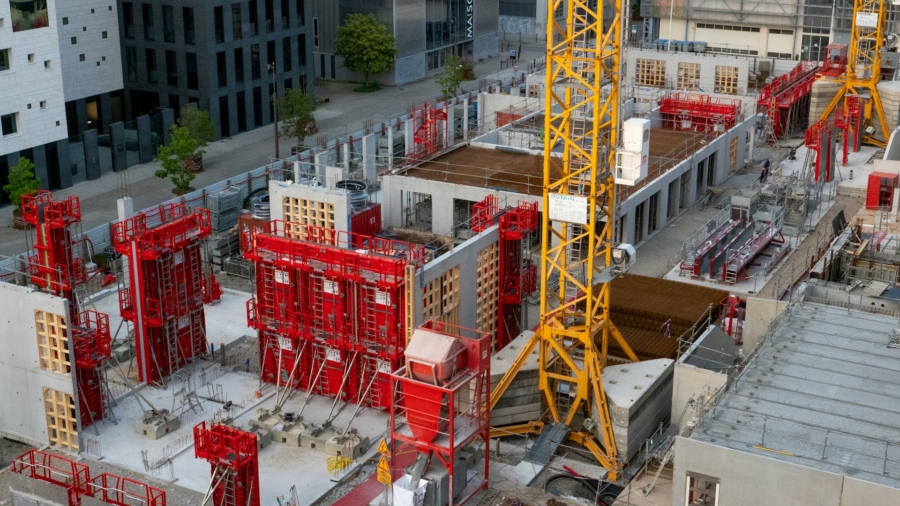Choosing the right types of piling for construction projects ensures long-term durability, stability, and cost-effectiveness. Construction projects, whether they involve residential builds, large-scale infrastructure, or marine structures like docks, all hinge on a strong foundation.
Piling is the preferred method for achieving this. This blog explores the essentials of pile construction, how to align your choice with project requirements, and factors to consider when selecting the appropriate piling solution.
By the end of this guide, you’ll have a clear understanding of piling options and the steps necessary to make the best decisions for your construction project.
What is Piling and Why Is It Essential?
Piling involves driving foundational supports deep into the ground to provide stability for structures. This technique is commonly used when surface soils can’t support the structural load, especially for large-scale projects or in challenging environments such as coastal areas.
Understanding the Benefits of Piling
Piling is a versatile solution, suitable for many situations:
- Load Distribution: Proper pile construction distributes weight evenly, reducing risks of settlement or subsidence.
- Suitability for Various Terrains: Piling’s adaptability allows it to support construction on soft soils, swampy areas, or even underwater.
- Durability: With the right piling choice, structures gain long-term strength and protection against erosion and environmental stress.
Knowing the purpose of piling is the first step to understanding its importance in project selection and foundation design.
Types of Piling and Their Applications
Different projects call for different types of piling. Here, we’ll look at some of the main categories and how they align with various construction needs.
Wood Piles
Wood piling is often used for smaller-scale projects, such as decks, docks, and boardwalks. Marine construction frequently employs pressure-treated wood for its rot resistance.
Key Benefits:
- Cost-effective for lightweight applications.
- Resistant to environmental damage in treated forms.
- Sustainable compared to metal or concrete alternatives.
However, dock piling repair near me services often reports that untreated wood piles are prone to decay over time.
Concrete Piles
Concrete piles are a go-to option for many projects, offering durability and adaptability for challenging terrains.
Applications:
- Foundation support for buildings and bridges.
- Coastal or marine construction where erosion is an issue.
Whether driven into place precast or cast in situ, concrete piles are highly durable but require specialist skills for installation.
Steel Piles
Steel piles are a robust choice for projects needing high load-bearing capacity or in cases where deep foundation depths are required.
Advantages:
- Long-lasting materials capable of handling heavy structural loads.
- Suitable for urban construction where space is tight.
Steel piling options often work well in areas with uneven ground or variable soil conditions.
Composite Piles
Combining materials such as concrete and steel, composite piles leverage the strengths of each to meet unique project needs.
Who’s It For?
- Projects requiring tailored solutions to soil or environmental factors.
- Infrastructure builds like highways and railroads.
Composite piles are gaining popularity due to their versatility and adaptability to innovative construction methods.
Marine Piling
Marine projects, such as new docks or pier constructions, heavily rely on marine piling methods. These are typically wood, steel, or concrete piles designed for submerged conditions.
Considerations:
- Frequent exposure to water increases maintenance needs.
- Consult dock piling repair near me to ensure longevity and remediation options.
Understanding these options is crucial for aligning the correct piling system with your structural goals, helping avoid costly setbacks or repairs.
Factors to Consider in Piling Selection
Choosing the right type of piling for your project involves assessing several factors. These include:
Soil Conditions
Geotechnical surveys are essential before selecting any piling solution. The type of soil, as well as its strength and composition, determines whether wood, steel, or concrete materials are ideal.
Load Requirements
Lighter structures, such as homes, might only need wood or small concrete piles, while heavy industrial builds benefit from steel or composite solutions. Understanding load requirements ensures longevity without overdesigning foundations.
Environmental Factors
Marine or coastal environments may require additional considerations, such as corrosion resistance, increased durability, and flexibility for changing water levels. Ensure your construction team is familiar with the unique demands of marine and water-adjacent piling systems.
Budget Constraints
While initial costs of piling solutions vary—wood being less expensive and steel among the pricier options—consider the life cycle cost, including maintenance and potential repairs.
Streamlining the Pile Construction Process
Once you’ve selected your piling solution, the next phase is ensuring seamless execution. Effective pile construction depends heavily on technology, skilled labor, and engineering expertise.
Site Preparation
Preparation includes geotechnical surveys, site clearance, and regulatory compliance. Collaborating with engineers ensures a holistic understanding of the environment and structural needs.
Installation Techniques
Common installation techniques include:
- Driving Methods: Driving prefabricated piles into the ground.
- Boring: Drilling into the ground and filling the space with piles, perfect for silty or clay-rich soils.
Monitoring and Evaluation
During and after installation, regular assessments prevent issues such as sinking, misalignment, or soil instability. Investing in early evaluations reduces costly repairs later.
Common Challenges During Piling
Even with ideal preparation, piling can present unexpected challenges. Addressing them promptly safeguards the success of your project.
Ground Stability
Poor soil stability can disrupt the piling alignment and depth. Prior testing prevents this issue.
Material Wear in Marine Environments
For waterfront construction, environmental factors such as saltwater corrosion or marine organisms can compromise pile strength. Frequent inspections are essential for any maintenance or dock piling repair near me.
Unexpected Load Adjustments
Underestimating load requirements can lead to structural strain. Always plan for additional safety factors.
Incorporating Community and Long-Term Maintenance
Joining forces with experts who specialize in piling and project selection is key to sustainable builds. Maintenance schedules, particularly for marine piles, should prioritize regular checks and rapid response to visible wear.
Engaging Professionals
Collaboration with reputable contractors and team members ensures not only meticulous pile construction but also foundational resilience for decades.
Sustainability Considerations
Innovative piling materials and methods can reduce environmental footprints, aligning with broader trends in sustainable construction.
Build Strong Foundations for Success
Foundations are the backbone of any construction project, and piling determines the strength of that backbone. By understanding the types of piling, the nuances of pile construction, and the challenges it poses, businesses and construction companies can make better decisions.
Regardless of whether your project requires dock piling repair near me or heavy-duty pile solutions for urban high-rises, investing in informed choice pays immense dividends.
Have a construction project in the pipeline? Consult with specialists for tailored piling solutions that suit your terrain, load requirements, and long-term goals.

